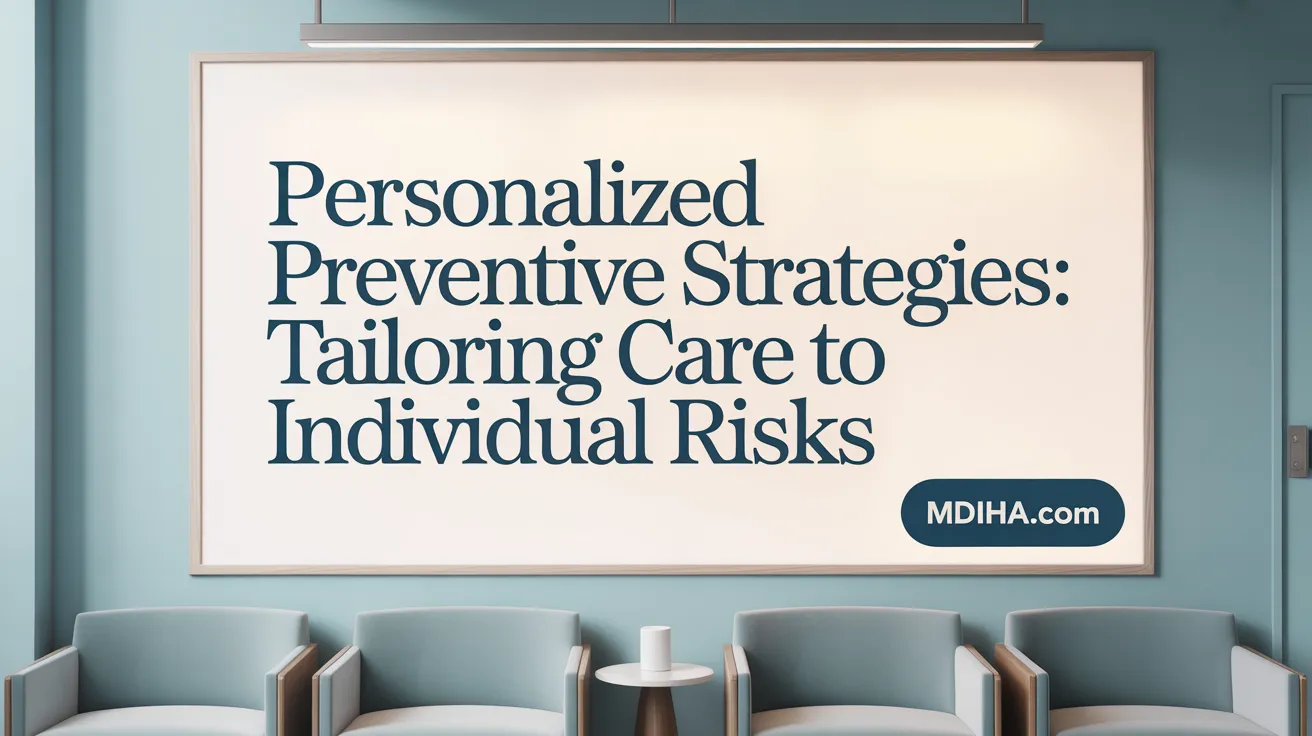A Shift in Healthcare Paradigms
As healthcare systems worldwide grapple with rising chronic diseases and mounting costs, a vital shift from traditional reactive care to preventive medicine emerges. Preventive medicine, with its multidisciplinary approach and focus on early intervention, promises improved health outcomes and cost savings. However, embracing this paradigm involves overcoming significant challenges, from systemic barriers to public awareness. This article explores the opportunities and obstacles preventive medicine presents in comparison to traditional care, highlighting innovations, educational gaps, and the integration of diverse medical practices.
Foundations and Frameworks of Preventive Medicine

What are the fundamental concepts and levels of preventive medicine compared to traditional care?
Preventive medicine is centered on preserving health and stopping diseases before they occur or worsen. It uses a staged approach, known as levels of prevention:
- Primordial prevention: Focuses on tackling root causes and social factors to stop risk factors from forming (Quaternary prevention, Primordial prevention).
- Primary prevention: Aims to prevent disease onset through measures like vaccinations and health education.
- Secondary prevention: Involves early disease detection via screenings and provides prompt treatment to halt progression.
- Tertiary prevention: Manages existing illnesses through rehabilitation and disease management to improve life quality.
- Quaternary prevention: Protects patients from unnecessary or harmful medical procedures caused by overdiagnosis or overtreatment (Quaternary prevention).
Traditional reactive care typically addresses health only after symptoms appear, which is often costlier and less effective due to delayed intervention, as seen in traditional reactive healthcare vs preventive healthcare.
Preventive care is personalized based on individual risk profiles, considering factors like age, genetics, lifestyle, and environment. This allows targeted screening, immunizations, and counseling to reduce disease risk and improve health outcomes (Preventive medical care and individual risk profiles).
Overall, preventive medicine shifts healthcare from reacting to illness towards proactive health maintenance and early intervention (Improving health outcomes through prevention).
Challenges in Implementing Preventive Medicine

What barriers hinder the broader adoption of preventive medicine compared to traditional care?
Preventive medicine, despite its proven benefits and cost-effectiveness of prevention programs, faces several hurdles limiting its wider adoption.
One of the major challenges is resource allocation. Healthcare resources are mostly directed toward disease management rather than prevention. This skew results in fewer preventive services being delivered, even though preventing disease often offers long-term savings and better health outcomes (Preventive care importance).
Time constraints and workload pressures on healthcare providers reduce opportunities for preventive discussions and screenings during patient visits. Additionally, some providers remain skeptical about the effectiveness of preventive measures, which dampens enthusiasm for their implementation (Barriers to preventive health care).
There is also a notable gap in education and training. Less than 0.5% of medical school curricula focus on public health and preventive medicine, and preventive medicine residency programs are declining, leading to fewer specialists trained to champion these practices (Preventive medicine challenges, Preventive medicine specialty and training).
Public awareness and misconceptions further compound the issue. Many individuals lack knowledge about available preventive services, their importance, or harbor vaccine hesitancy. The COVID-19 pandemic worsened access, highlighting existing disparities (Health disparities and preventive care, Clinical preventive services and uptake statistics.
Health disparities and social determinants also play a crucial role. Factors such as cost, lack of insurance coverage, geographical distance from providers, and inadequate transportation significantly restrict access to preventive care. These social determinants of health contribute to unequal preventive service uptake across populations (Social determinants affecting preventive care, Barriers to preventive care).
Addressing these challenges requires systemic shifts toward better education, increased funding, public engagement, and tackling social inequalities to enhance the adoption and impact of preventive medicine (Importance of accessible preventive care, Improving access to preventive services.
Opportunities Through Technology and Innovative Healthcare Models

How are technological advances and new care models enhancing preventive medicine compared to traditional care?
Technological advances have transformed preventive medical care from a reactive approach to a proactive one. Wearable devices and artificial intelligence (AI) enable real-time health monitoring and early detection of health anomalies. Big data analytics further assists in predicting risks and personalizing interventions tailored to individual patient needs.
Personalized preventive care models, such as MDVIP personalized preventive healthcare, emphasize extended annual wellness visits with comprehensive health screenings and coaching. These models limit patient panel sizes to ensure personalized attention, leading to better health outcomes and decreased emergency room visits.
Retail clinics have expanded significantly, now offering more than 125 preventive services. Staffed primarily by nurse practitioners and physician assistants, these clinics provide extended hours and virtual care options, increasing accessibility for diverse populations. This shift contributes to a reboot for preventive health care.
Integrated, team-based care approaches, like those utilized by Oak Street Health and Aetna, focus on proactive management of chronic conditions and social determinants of health. These models have successfully reduced hospital admissions and improved chronic disease outcomes by delivering coordinated and flexible care.
Together, these innovations in technology and healthcare delivery offer significant opportunities to enhance preventive healthcare practice, making care more accessible, personalized, and effective.
Comparing Preventive Medicine and Traditional Care: Economic and Health Outcomes
How do preventive medicine outcomes and costs compare to traditional care?
Preventive medicine focuses on early disease detection, vaccinations, screenings, and lifestyle interventions to reduce morbidity and mortality. This proactive approach often leads to better health outcomes compared to traditional reactive healthcare, which treats illnesses after symptom onset and tends to incur higher costs managing advanced diseases.
Immunizations and cancer or cardiovascular screenings are particularly cost-effective, reducing hospitalizations and expensive treatments. For example, annual flu vaccines prevent tens of thousands of hospital visits, and cancer screenings enable early treatments that improve survival rates.
However, demonstrating direct cost savings across all preventive programs can be challenging. Behavioral and lifestyle wellness programs sometimes increase short-term spending due to more frequent screenings or prescriptions. Studies indicate initial cost rises may stabilize or decrease over time, especially when personalized preventive models are employed, such as limiting patient loads per physician to enhance care quality and efficiency (MDVIP personalized preventive healthcare).
The shift toward value-based care models aligns with preventive medicine by incentivizing outcomes improvement and cost control. These models reward healthcare systems and providers for reducing disease incidence and hospital admissions, contrasting with the traditional fee-for-service model that often prioritizes treatments after illness develops.
Beyond economics, preventive care enhances quality of life by preventing complications, reducing disease severity, and supporting healthier populations through sustained maintenance and promotion of well-being (Benefits of Preventive Medicine).
Integrating Traditional, Complementary, and Preventive Medicine
What challenges and opportunities exist in integrating traditional and preventive medicine?
Traditional medicine, deeply rooted in indigenous knowledge, plays a vital role in healthcare for many populations worldwide, particularly in rural and underserved communities. It offers culturally accepted and accessible treatments, often complementing modern preventive healthcare practice. Integrating these approaches provides opportunities such as increased employment for trained medical herbalists and the potential to enhance preventive strategies with traditional health practices that resonate with local beliefs (Integration of herbal medicine in Ghana, Roles of Traditional Health Practitioners and Challenges).
However, integration faces significant challenges. A major obstacle is the lack of clear regulatory policies and limited coverage of traditional medicines under national insurance schemes, which restricts access and affordability (Weaknesses of herbal medicine integration). There is also mistrust between traditional practitioners and conventional healthcare providers, fueled by differences in training and approaches. Safety and efficacy concerns persist due to the secrecy surrounding herbal formulations and limited scientific validation, which hinders wide acceptance in formal health systems (Safety and regulation in traditional medicine).
To achieve effective collaboration, standardizing training for practitioners, conducting rigorous research to validate traditional treatments, and educating the public about their safe use are crucial (Strategies to enhance TCIM research). Addressing cultural perceptions and overcoming biases in the healthcare community will foster trust and support integrative care. Ultimately, combining traditional and preventive healthcare practice can broaden healthcare access, enhance patient adherence, and promote holistic well-being by respecting both scientific evidence and cultural practices (Herbal medicine integration benefits, Prevention in healthcare levels.
Strengthening the Preventive Medicine Workforce and Education
What are the workforce and educational challenges in expanding preventive medicine compared to traditional care?
The field of preventive medicine faces notable workforce shortages and educational gaps that hinder its expansion. Currently, only about 0.8% of U.S. physicians are certified in preventive medicine, reflecting a significant decline from earlier decades. Residency programs are limited, with just 26 slots available nationwide, constraining the pipeline of new specialists.
Medical education further compounds this challenge, dedicating less than 0.5% of curriculum time to preventive medicine and public health topics. This minimal exposure leaves many medical graduates underprepared for comprehensive preventive care roles.
Addressing these challenges requires broad, multidisciplinary training. Preventive medicine physicians must acquire expertise not only in clinical medicine but also in epidemiology, biostatistics, health policy, behavioral sciences, and environmental health. Core competencies include skills in communication, problem sensitivity, inductive and deductive reasoning, and data visualization (Skills Required for Preventive Medicine).
Looking ahead, future physicians will need to merge clinical expertise with public health principles, incorporating digital health tools and data analytics to shift healthcare from reactive to proactive models (AI in healthcare). Integrating these skill sets will enable more effective population health management and personalized preventive strategies.
Ethical and equity considerations are central to preventive medicine. The specialty is rooted in beneficence and nonmaleficence—promoting health and preventing harm. Justice guides equitable distribution of resources to reduce health disparities, while respect for autonomy emphasizes informed patient decision-making and transparency about preventive interventions' benefits and societal impacts (Ethical principles supporting preventive medicine.
Towards a Healthier Future: Embracing Prevention
Preventive medicine offers transformative potential to improve health outcomes, reduce healthcare costs, and address longstanding inequities that traditional reactive care often overlooks. While challenges persist—including educational gaps, systemic barriers, and integration difficulties with traditional medicine—advances in technology, innovative care models, and growing recognition by health authorities provide promising avenues forward. Strengthening the preventive medicine workforce, expanding public awareness, and fostering collaborative approaches between diverse healthcare paradigms will be crucial to realizing a more proactive, equitable, and effective healthcare system. Embracing prevention today sets the foundation for healthier communities tomorrow.
